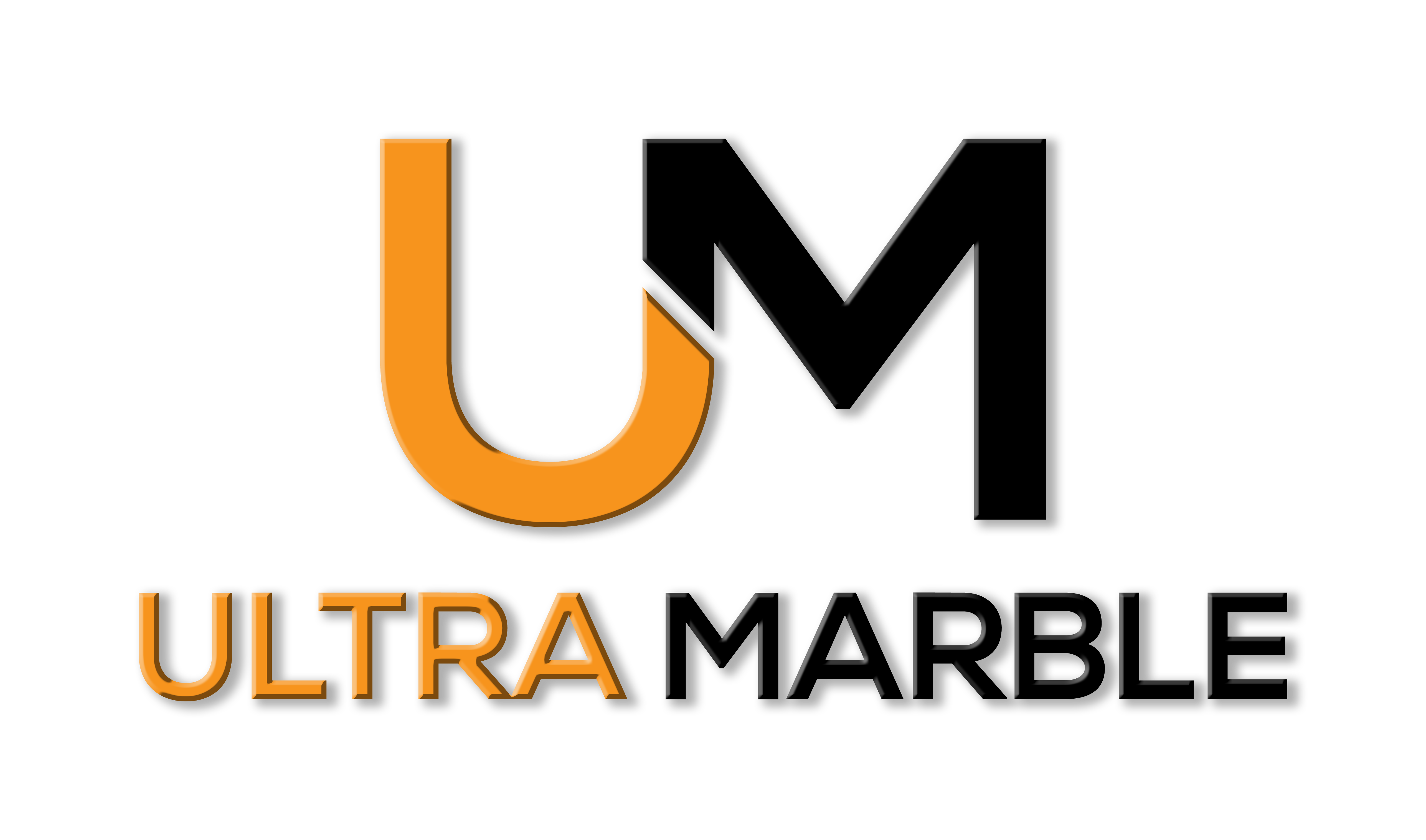Types of Sinks and Their Features
1. Undermounted Sinks:
Undermounted sinks are installed beneath the countertop, creating a seamless and modern look. The edges of the worktop extend over the sink, making it easy to wipe water and debris directly into the sink.
- Advantages:
- Sleek and minimalist design.
- Easy to clean and maintain, with no exposed edges.
- Maximizes countertop space.
- Important Note: All undermounted sinks provided by Ultra Marble should be cradled into the furniture to ensure secure installation.
2. Integrated Stone Sinks:
Integrated sinks are crafted from the same material as the worktop, offering a completely seamless appearance. These sinks blend into the countertop for a uniform and luxurious finish. They are also bespoke sinks, meaning they can be made to any size and customized in style to suit your needs. Additionally, our integrated sinks feature an Easy Dry bottom, an angled design that helps drain water fully. This makes cleaning easier, as there’s no need to use a cloth to dry the bottom.
- Advantages:
- High-end aesthetic with no visible joins.
- Fully customizable in size and style.
- Easy to clean with the Easy Dry bottom for effortless water drainage.
- Durable and resistant to scratches when made with high-quality stone.
3. Belfast Sinks (Butler Sinks):
Belfast sinks are deep, rectangular ceramic sinks that are typically installed with the front edge exposed. They are a classic choice for traditional or farmhouse-style kitchens.
- Advantages:
- Large and deep, making them ideal for washing large pots and pans.
- Timeless and elegant design.
- Durable and resistant to staining.
- Important Note: Belfast sinks must be in their final position during templating to ensure precise fitting.
4. Overmounted Sinks (Inset Sinks):
Overmounted sinks sit on top of the countertop, with the edges of the sink resting on the worktop surface. These are a more traditional sink option.
- Advantages:
- Easier to install compared to undermounted sinks.
- Available in a wide variety of materials and designs.
- Cost-effective option for many kitchens.
5. Double Bowl Sinks:
Double bowl sinks feature two separate compartments, making them highly functional for multitasking in the kitchen.
- Advantages:
- Allows for washing and rinsing simultaneously.
- Great for separating tasks, such as washing dishes and prepping food.
- Available in both undermounted and overmounted styles.
6. Single Bowl Sinks:
Single bowl sinks have one large compartment and are perfect for kitchens with limited space or for those who prefer simplicity.
- Advantages:
- Provides a spacious area for washing larger items.
- Easier to clean due to the lack of dividers.
- A sleek and minimalist option.
7. Trough Sinks:
Trough sinks are long, narrow sinks that can serve multiple purposes. They are often used in modern and industrial-style kitchens or for entertaining.
- Advantages:
- Unique and stylish design.
- Perfect for entertaining—fill them with ice and drink bottles to keep beverages chilled and fresh.
- Great as a secondary sink or for prep work.
- Easy to clean and maintain.
8. Axix Sinks:
Axix sinks are a modern innovation designed to seamlessly integrate with the worktop while maintaining a metallic interior for added durability. They combine the elegance of an undermounted sink with the practicality of a metal base.
- Advantages:
- Sleek and seamless design that blends beautifully with the worktop.
- Durable metal interior, resistant to scratches and stains.
- Available in a range of finishes to match your kitchen style.
- Easy to clean and maintain, offering both style and practicality.
Drainer Grooves vs. Recessed Drainer: What’s the Difference?
Drainer Grooves:
Drainer grooves are shallow, linear channels carved into the surface of the worktop. They are designed to guide water from the draining area back into the sink. These grooves are a popular choice for minimalist and sleek kitchen designs.
Advantages of Drainer Grooves:
- Aesthetic Appeal: They maintain a clean, seamless look on the worktop, complementing modern and luxurious kitchen styles.
- Easy Maintenance: Grooves are easy to clean with minimal effort, as there are no deep recesses where dirt can accumulate.
- Space Efficiency: They don’t take up much surface area, leaving more usable countertop space.
Recessed Drainer:
A recessed drainer is a slightly lowered or indented section of the worktop near the sink. This area collects water and prevents it from spilling onto the rest of the countertop, channeling it back into the sink.
Advantages of a Recessed Drainer:
- Water Containment: The recessed area keeps water contained, making it a practical choice for busy kitchens or homes with lots of washing up.
- Durability: The recessed section can be particularly useful for protecting the worktop from wear and tear caused by constant water exposure.
- Customizable Design: It can be tailored in size and shape to suit your needs, offering both functionality and style.
Both options can be crafted to match your worktop material and design preferences. Drainer grooves are ideal for those prioritizing style and simplicity, while recessed drainers are perfect for practicality and heavy use. If you’re unsure which option suits your needs best, we’re happy to guide you through the decision-making process!
